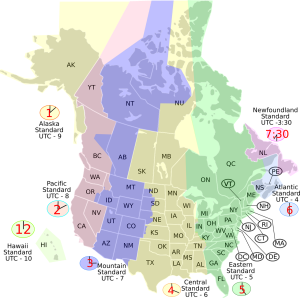Understanding U.S. Time Zones and How They Affect Daily Life

Time plays a crucial role in how people work, travel, and connect globally. In a country as vast as the United States, knowing the exact local time is more than just a convenience — it’s often essential for smooth communication and scheduling. Whether you are coordinating a business meeting, planning a vacation, or catching up with friends in another city, being aware of time differences ensures you stay on track. This article examines the functioning of U.S. time zones, their significance, and the impact they have on daily life in various regions.
Overview of U.S. Time Zones
The United States spans multiple time zones, making it one of the more complex countries to navigate in terms of scheduling. The four main time zones in the continental U.S. are:
- Eastern Time Zone (ET) – This covers major cities like New York, Washington D.C., and Atlanta.
- Central Time Zone (CT) – Includes cities such as Chicago, Dallas, and New Orleans.
- Mountain Time Zone (MT) – Encompasses Denver, Phoenix (in part), and Salt Lake City.
- Pacific Time Zone (PT) – Covers the West Coast, including Los Angeles, Seattle, and San Francisco.
Beyond these, the U.S. also has Alaska Standard Time (AKST) and Hawaii-Aleutian Standard Time (HAST), which apply to Alaska and Hawaii, respectively. Each time zone generally differs by one hour from its neighbor, creating a spread of several hours between the East Coast and Hawaii.
For anyone planning events or travel, it helps to understand how the time in the United States can vary drastically from one coast to the other.
Chicago’s Role in the Central Time Zone
Chicago is one of the most recognizable cities in the U.S. and serves as a key reference point for the Central Time Zone. The city observes Central Standard Time (CST) in the cooler months and switches to Central Daylight Time (CDT) during the warmer months when daylight saving time is in effect.
If you want to know the exact time in Chicago right now, it’s important to account for daylight saving adjustments. Chicago is typically one hour behind New York and one hour ahead of Denver, making it a middle point for many cross-country schedules. This positioning is particularly helpful for businesses that operate nationwide, as it allows them to coordinate with both coasts more efficiently.
Daylight Saving Time in the U.S.
Daylight Saving Time (DST) is a seasonal time adjustment observed in most U.S. states. It typically begins on the second Sunday of March and ends on the first Sunday of November. During this period, clocks are moved forward by one hour to extend evening daylight.
While DST can be beneficial for energy savings and outdoor activities, it can also create confusion, especially for travelers or those working with international partners. Some states, like Arizona (excluding the Navajo Nation) and Hawaii, do not observe daylight saving time, which further adds to the complexity.
Being mindful of DST changes is essential when booking flights, hosting online meetings, or attending events across different states.
How Time Differences Affect Daily Life
Business and Professional Coordination
Companies with offices or clients in multiple states must plan meetings carefully to accommodate everyone’s local time. A team in New York might start its workday at the same moment a team in Los Angeles is just waking up. This requires careful scheduling to ensure all parties can attend without inconvenience.
Travel Planning
When traveling across states, especially by air, knowing time zone differences can prevent missed connections. A flight departing from Chicago to San Francisco will appear to take fewer hours on paper because of the time difference, but the actual travel time remains the same.
Remote Work and Freelancing
With more people working remotely, time awareness has become even more critical. A freelancer in Texas might collaborate with clients in Florida and California, requiring flexibility and awareness of the hours each party is available.
Tools for Checking U.S. Time
Thanks to modern technology, checking the time across multiple U.S. cities is easier than ever. Popular options include:
- Smartphone World Clocks – Most phones allow you to save multiple cities to track their times instantly.
- Search Engines – A quick search can show live time in any U.S. city without needing a dedicated app.
- Dedicated Time Zone Websites – Sites that display live clocks, daylight saving schedules, and time zone maps.
These tools can be lifesavers when setting up meetings, booking travel, or keeping in touch with friends and family spread across the country.
Conclusion
Understanding how time zones work in the U.S. is essential for effective planning and communication. From Chicago’s central role to the spread of hours across the nation, each time zone comes with its quirks and adjustments. Whether you are managing a business, preparing for a trip, or simply trying to catch a call with someone far away, staying aware of time differences will help avoid confusion.
In a country where every hour can mean a different part of the day, being time-conscious is not just practical — it’s necessary.
Frequently Asked Questions
1. How many time zones does the U.S. have?
There are six main time zones, including Eastern, Central, Mountain, Pacific, Alaska, and Hawaii-Aleutian.
2. What is the time in Chicago right now?
It follows Central Time, switching between CST and CDT with daylight saving.
3. Does every U.S. state observe daylight saving time?
No, states like Arizona (most areas) and Hawaii do not observe it.
4. How can I check the time in the United States easily?
Use smartphone world clocks, online searches, or time zone map websites.
5. Why is time awareness important for U.S. travel?
It prevents missed flights, meeting confusion, and scheduling errors across states.




